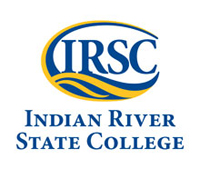Below is a summary of the abstract you submitted. Presenting author(s) is shown in bold.
If any changes need to be made, you can modify the abstract or change the authors.
You can also download a .docx version of this abstract.
If there are any problems, please email Dan at dar78@pitt.edu and he'll take care of them!
This abstract was last modified on April 21, 2015 at 5:39 p.m..

Mycobacteriophages capable of infecting Mycobacterium smegmatis mc<sup>2</sup> 155 were isolated through enrichment of soil samples collected in Indian River, St. Lucie and Martin Counties, Florida. This analysis represents the first look at the diversity of the mycobacteriophage population in these areas. As part of the HHMI-SEA PHAGES program, over 5,800 mycobacteriophage have been isolated and 1,233 have been classified into 23 clusters. Here we report the isolation of eleven phages representing two confirmed clusters. Electron microscopy and molecular characterization indicate that all isolates belong to Siphoviridae, which have double stranded DNA genomes, long flexible tails and make up 90% of all mycobacteriophage. The complete genome sequence was determined for phages Lumos, Pioneer and SnapTap. Comparative genomic analysis classified Lumos within subcluster L3, which has 2 other members. Lumos has a 75,586 bp genome with 59.3% GC content (M. smegmatis has 67.4% GC), and initial analysis has predicted 130 open reading frames (ORFs) and 10 tRNAs. Pioneer was identified as an A9 subcluster member, with a 53,219 bp genome and 62.6% GC content. Of the approximately 100 ORFs predicted in Pioneer, less than 20% were assigned function, which is representative of the diversity that exits in these phage genomes. Finally, SnapTap was identified as a cluster A2 phage, with high sequence identity to SweetiePie, an A2 phage with a genome of 53,184 bp. This study helps to expand the diversity of cluster L phages and provide a more thorough understanding of mycobacteriophage ecological and genomic diversity.


